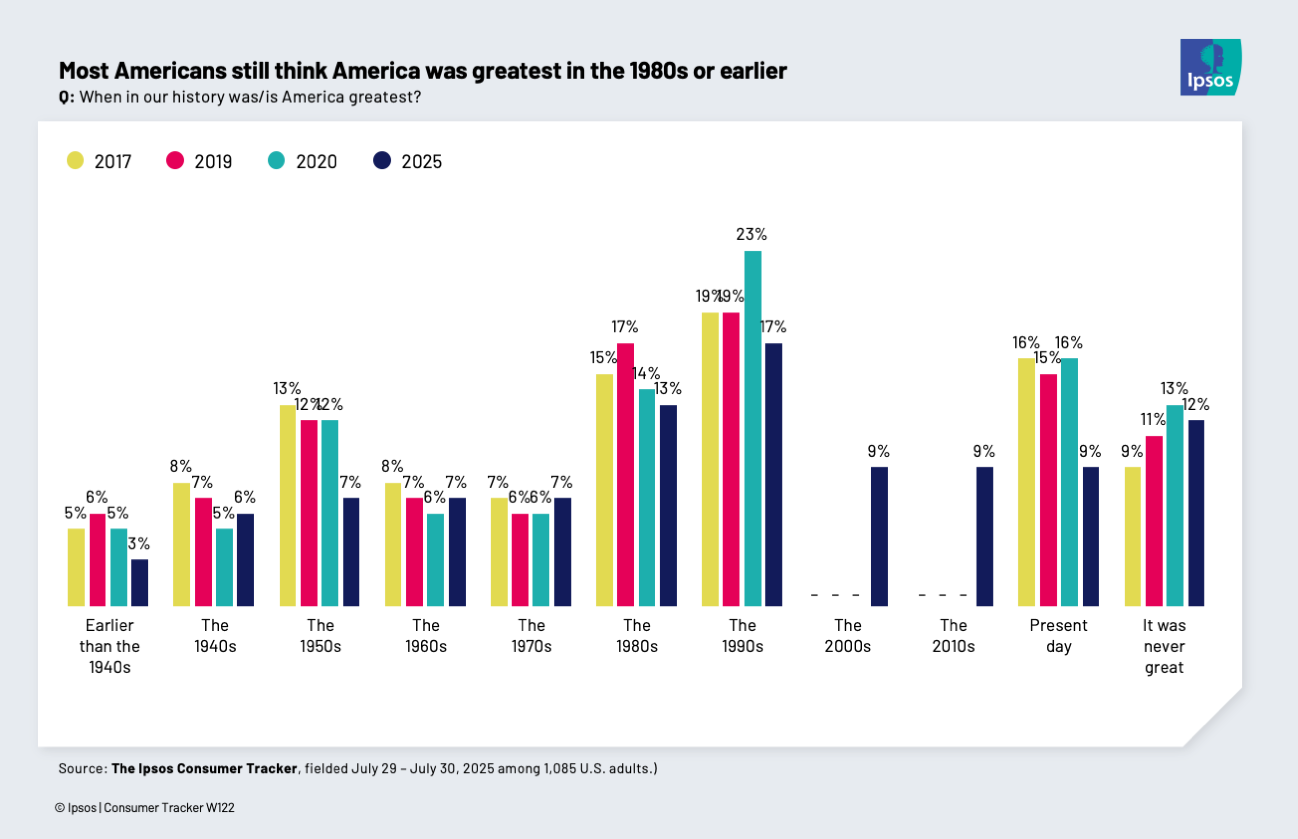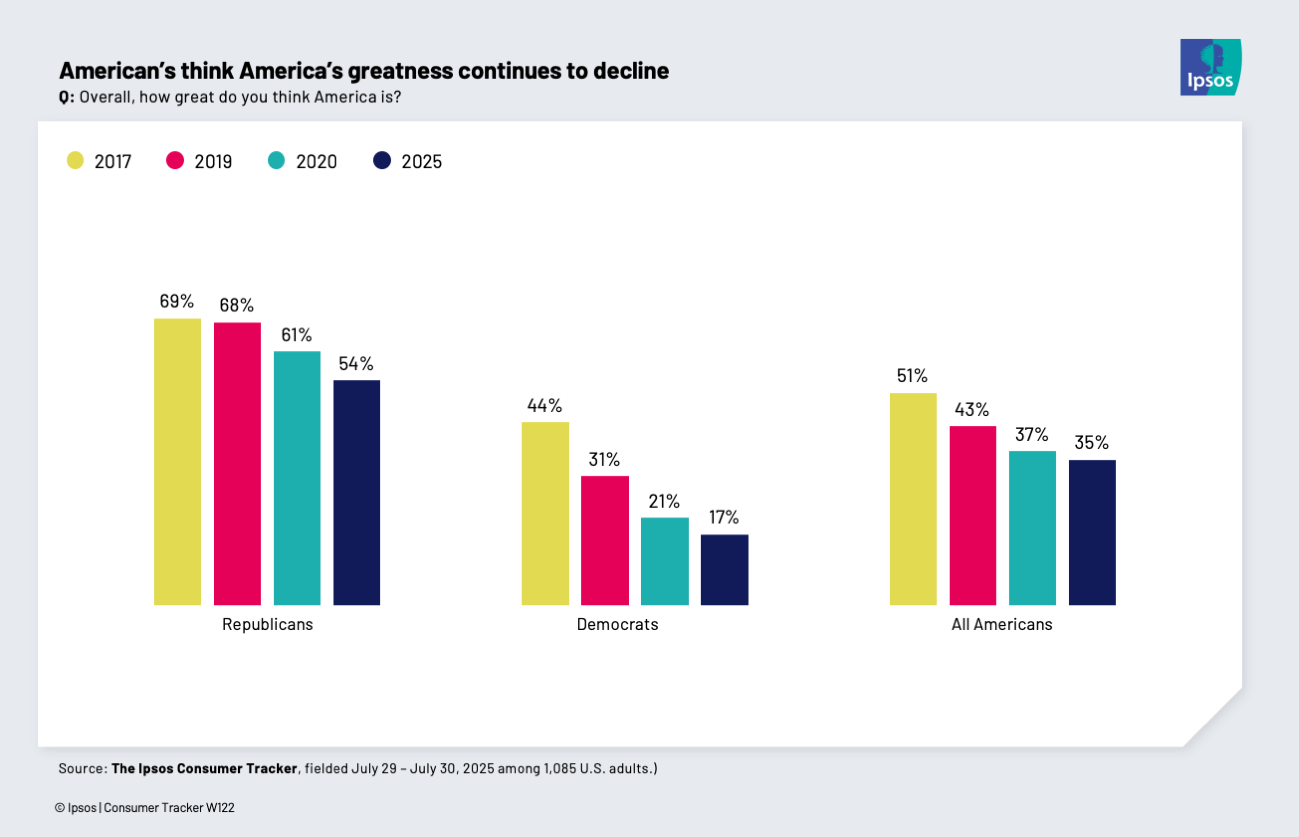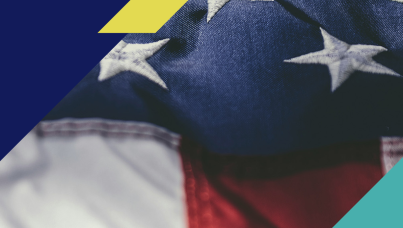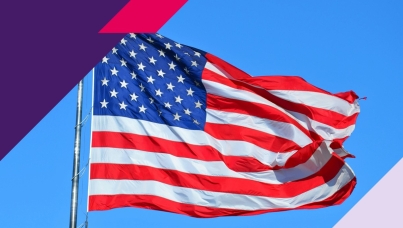Americans think America’s greatness continues to decline
The Ipsos Consumer Tracker asks Americans questions about culture, the economy and the forces that shape our lives. Here's one thing we learned this week.

Why we asked: We’ve spent much of the year helping clients and readers alike Know the New America. We’ve done a deep dive into the future of the American Dream. So how are Americans feeling about America itself?
What we found: There is a lot of nuance in how Americans view the American Dream. But there is also a lot of nuance in how Americans view America itself. Since the phrase “Make America Great Again” entered public discourse, Ipsos has been tracking the sentiment off-and-on.
In May 2017, as President Trump’s first administration was getting underway, about half of Americans (51%) said America was “great” (rating the nation at least an eight out of ten on a greatness scale). There was a partisan divide. Nearly seven in ten Republicans thought the nation was great, vs. just 44% of Democrats. Since then, opinions in both parties have steadily declined. Now just 36% of Americans think the nation is an eight or greater. The partisan split has only widened – now it’s a 37-point chasm. The mean rating has dropped from 6.8 in 2017 to 6/1 today.

So when was America greatest? A (shrinking) majority say it was greatest before the 1980s. That means 58% (down from 70% in 2017) think the nation was at its peak before the Sony Walkman debuted. Just 9% think it’s at its greatest in the present day. More (12%) think it was never great. White Americans are less likely to think American was never great.
This ties into a number of Ipsos Global Trends, most notably the Retreat to Old Systems, which is a complicated trend around both nostalgia, but also nationalism, gender norms and more. Note this is also a trend derived from data and research.
All of this has implications for brands. There are nuances in terms of generational, income and of course partisan feelings about the American Dream and America itself. There are many shared values, though even there sometimes differences in how we define the concepts (like “freedom”) and how we want to see them turned into policy, or messaging or products.
There are also tensions:
Yes, 68% of Americans believe in the American Dream. Yes, but… 80% of Americans also think the Dream is harder to achieve than it used to be.
As marketers looking for “safe” places to connect with consumers, the American Dream offers a playbook. That could be supporting people as they try to reach for their aspirations. That could be telling stories that align with the shared values beneath the Dream.
But understanding the nuances of who believes what, why and how is key. Understanding what generally and specifically different audiences dream of, when they dream, if they dream…. That’s where research comes in. Otherwise, you might as well just be writing “trend” stories and calling your crisis PR firm when it doesn’t work out.
More insights from this wave of the Ipsos Consumer Tracker:
Fewer Americans are planning to cut back on items due to tariffs
Half of Americans don’t know electric vehicle tax credits are expiring; few are planning a purchase
People still largely prefer humans to create content, not AI
A plurality of parents expect to spend the same on back-to-school
The Ipsos Vibe Check: Here's how Americans feel about the government this week
The Ipsos Care-o-Meter: What does America know about vs. what does America care about?



